2019 Hyundai Kona Electric Review

Electric vehicles aren’t for everyone.
Drivers in, say, Wyoming or any other location with miles and miles of miles and miles probably can’t live with the range limitations inherent to even most advanced EVs. Anyone that tows for a living or hauls heavy loads is also an unlikely candidate for a battery-powered vehicle.
But if you’re a more everyday sort of motorist, commuting to work or occasionally heading out of town on the weekend, electric cars have really reached a tipping point. Pricing has come down at the same time driving range has increased, and the result is at long last they’ve become a workable solution for many drivers.
A long-range Tesla Model 3 midsize sedan is currently available with a battery pack that provides 310 miles (499 kilometers) of range; the standard model, when eventually available, will offer less, an EPA-estimated 215 to 220 miles (346 to 354 kilometers). The Chevrolet Bolt is a fine option as well, rated at 238 (383 kilometers), while Nissan’s best-selling Leaf should deliver 150 miles (241) on a single charge, though a longer-range version is in the works. But one of the strongest offerings in this budding segment is brand new for model-year 2019, hailing from South Korea.
Checkin’ the Specs
The Hyundai Kona is an exuberantly styled subcompact utility vehicle, one that that marries emotional design and a versatile interior with impressive dynamics and economical operation. Drivers that want a practical vehicle that’s doesn’t look like some cookie-cutter crossover will be well served by this offering.
FAST FACTS
| Electric Motor: | Permanent-magnet synchronous |
| Battery: | 64 kWh lithium-ion polymer |
| Driving Range: | 258 miles (415 kilometers) |
| Output: | 201 horsepower, 290 pound-feet of torque |
| Transmission: | Single-speed reduction gear |
| Zero-to-60 MPH Acceleration: | 7.6 seconds |
| Top Speed: | 104 miles an hour (167 km/h) |
| U.S. Fuel Economy (MPGe): | 132 city, 108 highway, 120 combined |
| Estimated U.S. Price: | $35,000 |
Tossing out the standard model’s internal-combustion powertrain like a used piece of paper towel, the all-electric Kona Electric features a 64 kWh lithium-ion polymer battery pack and a permanent magnet synchronous electric motor. This arrangement provides an estimated driving range of 258 miles, a good bit more than the Chevrolet Bolt can muster, arguably its biggest rival.
Unlike its primary competitors, Hyundai is offering the Kona Electric with a lifetime battery warranty. While this looks great on paper and undoubtedly provides peace of mind to long-term owners, company officials couldn’t share specifics at the time this review was prepared.
Using a Level II plug (240 volts) and the standard 7.2 kW onboard charger, that electron reservoir can be completely replenished in 9 hours and 35 minutes. Step up to a Level III quick charger running at 50 kW and that time drops to a mere 75 minutes. Track down a plug with 100 kWs of juice and it’s fully juiced in less than an hour.
The Kona Electric’s motor is rated at an impressive 201 horsepower. Torque output is even more remarkable at 290 pound-feet. With a single-speed reduction gear “transmission,” these output figures allow the vehicle to reach 60 miles an hour (100 km/h) in a brisk 7.6 seconds and provide a top speed of 104 miles an hour (167 km/h) if you ever need to get somewhere in a hurry.
All told, this vehicle’s powertrain is very efficient, with the battery pack and motor assembly weighing less than 1,000 pounds. Given this packaging advantage, the vehicle offers 19.2 cubic feet (544 liters) of cargo capacity, exactly the same as in a standard Kona. Often electrified vehicles loose interior space because of difficulties that arise in fitting their hefty battery packs.
According to the U.S. EPA, the Kona Electric should sticker at 132 MPGe in city driving, that’s miles per gallon equivalent, 108 on the highway and 120 combined.
Chess Pieces, Not Matryoshka Dolls
Rather than making different lengths of the same sausage, to paraphrase a famous adage in the automotive world, Hyundai is taking a completely different approach with its latest generation of vehicles. Instead of building a family of matryoshka nesting dolls they’re offering a series of chess pieces where each nameplate looks a little different. And the Kona Electric certainly is distinctive.
Front and center is a strange grille, well, it really isn’t so much a grille as it is a giant swath of dimpled plastic. This is undoubtedly great for vehicle aerodynamics, and the vehicle has a low coefficient of drag clocking in at just 0.29, but it’s a bit hard on the eye, making it look like the Kona Electric is wearing a hockey mask. The charge port is also hidden on the driver’s side of this faux grill behind a door that pops open between the center badge and headlamp.
Other angles of this amped-up crossover are much more conventional. From the rear three-quarter view, it’s actually quite handsome. Still, you shouldn’t let that front-end deter you from purchasing because there’s a lot to praise inside.
A Top-Quality Interior
The Kona Electric’s interior is spacious and of high quality. The materials, while overwhelmingly hard plastic, nonetheless look far richer than you might expect, with low sheen and attractive textures. Build quality is high and so is comfort, both front and rear.
Since there’s no internal-combustion powertrain, a push-button shifter located on the center console replaces a traditional gear selector, with switches for park, neutral, drive and reverse arranged in a cross pattern.
On the technology front, Apple CarPlay and Android Auto are standard, displayed on a floating seven-inch touchscreen perched high on the dashboard. An integrated navigation system is offered in the top-trim version.
Three models of the Kona Electric are available, with SEL serving base duty. From there, you can step up to either a Limited or Ultimate model.
Ensuring this is no penalty box, it’s got ample standard equipment including heated front seats, keyless entry with push-button start, adaptive cruise control and more. Additional goodies offered in higher-end models include things like LED headlamps, an auto-dimming rear-view mirror, wireless device charging, and even a head-up display.
The Drive
Smooth and quiet, the Kona Electric behaves like your typical EV. There’s no rumbling combustion engine or jerking transmission to cope with, the whole experience is serene until you nail the accelerator.
This Hyundai has no problem roasting its front tires from a standstill. Get too enthusiastic with the go-pedal, if the road surface is damp or the front wheels are turned the rubber will roast, albeit only briefly until the traction-control system intervenes.
This vehicle is seriously quick, rocketing forward at nearly any speed, a chief advantage of generous torque at essentially zero rpm. Recuperating much of the energy expended getting the Kona Electric moving is an adjustable regenerative braking system that offers three different levels. Keeping it in the most-aggressive setting allows you to drive with just one pedal, as the vehicle slows down strongly enough by just lifting your foot off the accelerator, which maximizes the number of electrons that are put back into the battery. If you prefer a more conventional driving experience, choose one of the less-aggressive settings.
Hyundai also offers a feature called Smart Regenerative Braking. It automatically varies how aggressive the system performs based on driving conditions, softening it while going uphill and turning up the wick while descending.
Up front, the Kona Electric has McPherson struts while its rear is supported by a multilink suspension system, a fairly standard arrangement that works well. The motor-driven power steering is fine if unremarkable.
Three different driving modes are offered in this vehicle: Eco, Normal, and Sport. Predictably, Eco aims to minimize electrical consumption in order to maximize range while Sport livens the driving experience by increasing the rate of acceleration. Normal splits the difference making it the Goldilocks choice.
The Verdict: 2019 Hyundai Kona Electric Review
The combustion-powered Kona is already an excellent option in the subcompact crossover segment and the all-electric version is just as compelling, a more than worthy foil to the Chevrolet Bolt and Nissan Leaf.
The Kona Electric is slated to go on sale at the beginning of next year starting in California then spreading to other zero-emission vehicle states including Vermont, Oregon and New York, to name a few. If you live in one of these markets and an EV fits your driving lifestyle, there’s absolutely no reason not to put this Hyundai at or near the top of your shopping list. But there’s just one problem: The company has not yet released pricing information, though it’s almost certainly going to be all over its chief rivals like a coat of paint. The Leaf kicks off around $31,000 while a Bolt can be had for about 37 large, we’d guess the Kona Electric will fall somewhere in between.
Discuss this story on our Hyundai Kona Forum.
LOVE IT
- Upscale Interior
- Driving Range
- Acceleration
- Versatility
LEAVE IT
- Unknown Pricing
- Funky Styling

Born and raised in metro Detroit, Craig was steeped in mechanics from childhood. He feels as much at home with a wrench or welding gun in his hand as he does behind the wheel or in front of a camera. Putting his Bachelor's Degree in Journalism to good use, he's always pumping out videos, reviews, and features for AutoGuide.com. When the workday is over, he can be found out driving his fully restored 1936 Ford V8 sedan. Craig has covered the automotive industry full time for more than 10 years and is a member of the Automotive Press Association (APA) and Midwest Automotive Media Association (MAMA).
More by Craig Cole



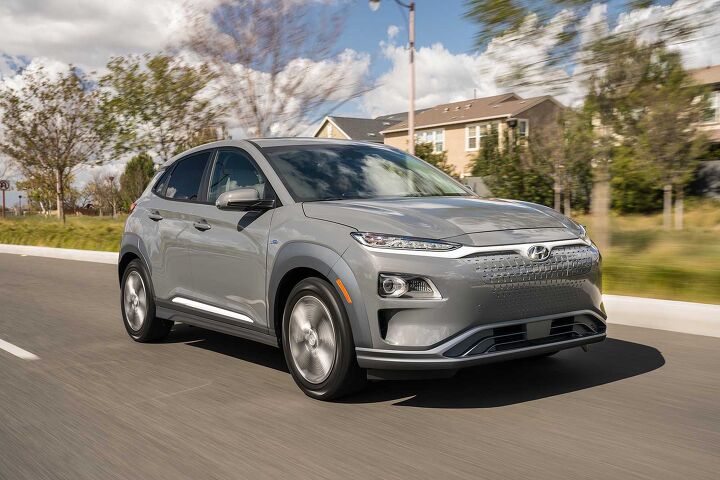


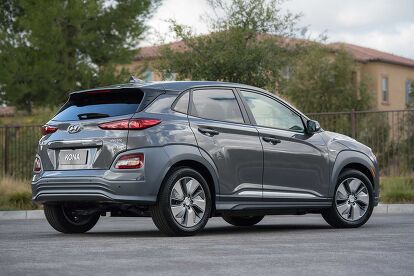

























































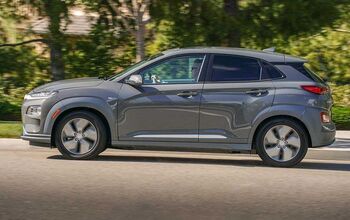

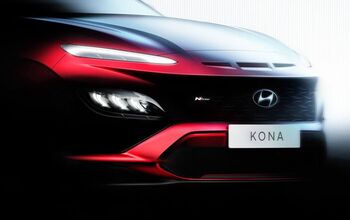

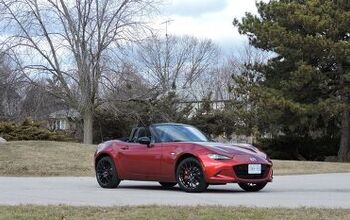
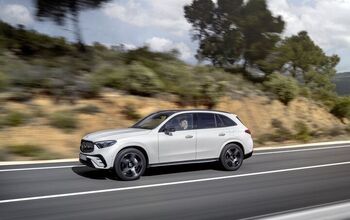
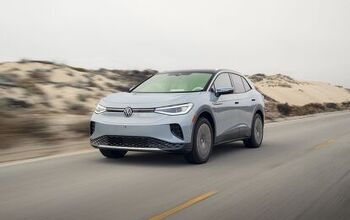





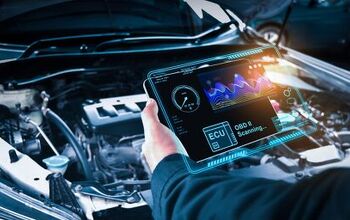
Comments
Join the conversation
The Bolt is the most uncomfortable car to actually drive one can imagine. Very narrow seat for the driver and no side control when going through corners or on a twisty road. Kona has very comfortable seats and interior display is a combination of a square panel as with the Tesla Model 3 and also a dash for key information that is directly in front of the driver. Add in the $46,000 base cost for a Model 3 at this point in time and it is worth waiting for the Kona.